The world’s last-known commercial fore-edge painter shares the secrets of his mesmerizing “vanishing” images, painted between the page edges of books, to help keep the magic of his dying craft alive.
London-born vanishing fore-edge painter, Martin Frost, paints on the page edges of gold-gilded books. The pages are fanned to reveal his delicate handiwork. Today, Frost, 72, lives in the seaside town of Worthing in southern England and works from home in his painting and book-binding studio.
‘I’m Blessed’
From a young age, Frost had been familiar with the artistic world.
“My father was a professional portrait painter, and my mom used to be the manager in an art shop,” Frost told The Epoch Times.
Since painting and drawing were always going on at his home, Frost was encouraged from a very early age.
“Kids at school are happy to paint, but later on in life, they become less confident, and as adults, they just don’t do it anymore … they’re afraid to make a mistake,” he said. “I had no fear … I’m blessed by my parents, I’m lucky.”
Frost attended art college with the intention of becoming a painter. However, he later discovered that he wanted to instead be a designer for a theater and thus headed in that direction.
While working as a set decorator in the theater during the 1970s, his neighbor and colleague Don Noble introduced him to fore-edge painting.
“He showed me what he did,” Frost said. “And I was quite impressed.”
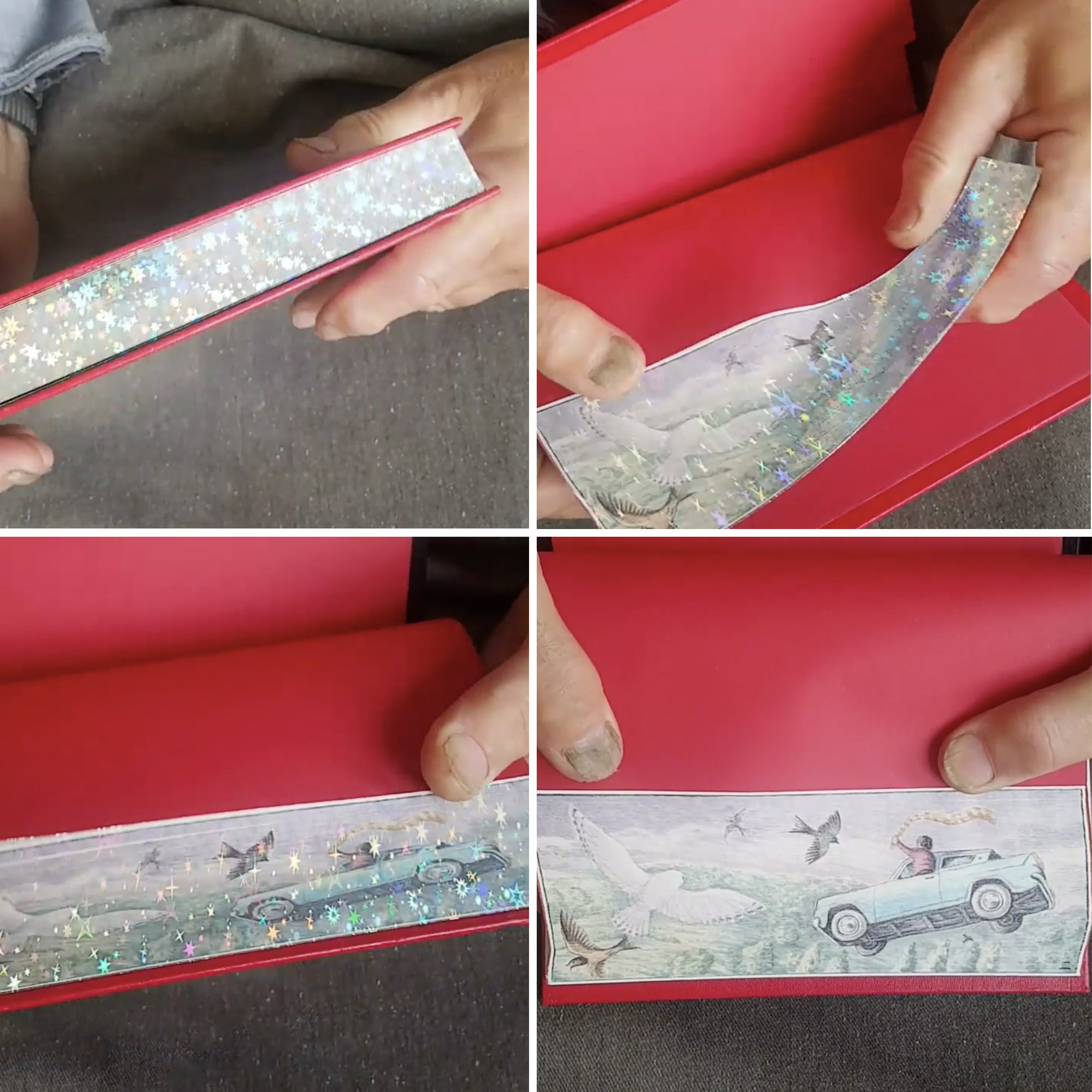
Despite working for long hours at the theater, Frost decided to give the unique art a try. With the guidance of Noble, he picked up the art form fairly quickly as the technique was quite straightforward.
“I happened to be quite skilled at drawing so I could make a reasonable image,” Frost said. “It was just a case of learning how to put it onto a book in such a way that it vanishes … that’s the clever bit.”
“I did a few, showed them to a few book dealers and they said, ‘That’s right, yes, we can sell this work.’ That work slowly took over my life and the theatre dropped out,” Frost said. “My wife was at work as well, both of us earning, so we made it work … most people get through a few jobs, but I’ve stuck with this one for half a century!”

A Deliberate Craft
The earliest versions of fore-edge paintings hail from London, England, in the mid-17th century and it remains a British craft.
While one side of every page in a book is bound to the spine, the other three can be painted. Frost differentiates between single, two-way double, split double, and all-edge fore-edge painting, depending on how many images are painted and in what directions they are revealed.
“There’s more elaborations,” he said.

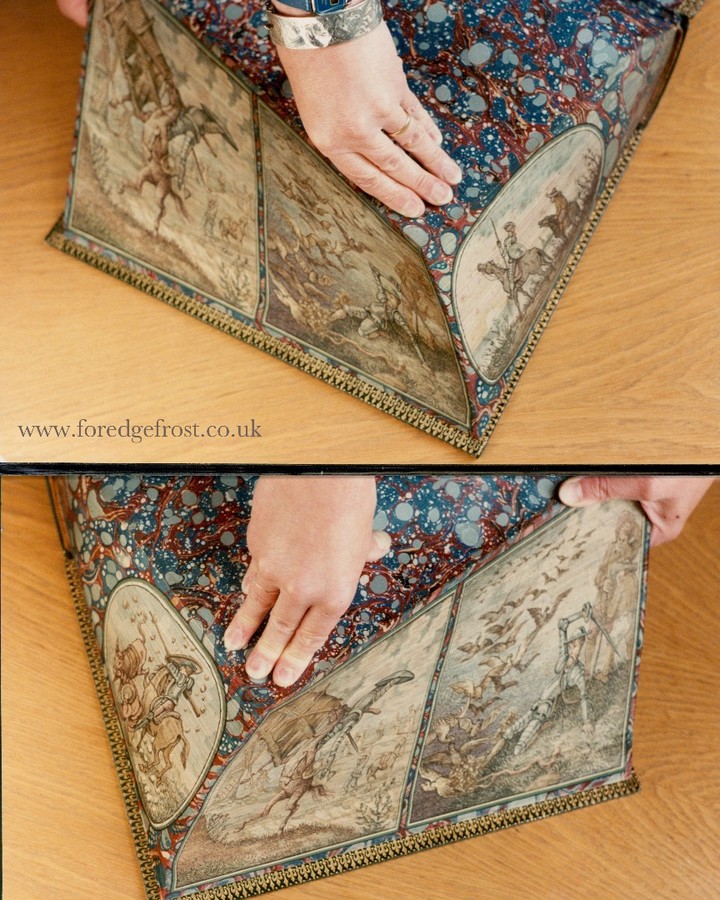
He also maintains that gold is the traditional way of hiding the painting.
Frost and his predecessors favor watercolor over oil and plastic-based paints since a light touch and soft pigment are needed to avoid weighing down the pages.
When Frost started fore-edge painting in his 20s, he worked with 19th-century leather-bound books with gold-gilded pages, perfect for hiding his handiwork.
“In the past, I’ve done all of the Bibles and prayer books with religious scenes, they’ve been popular,” Frost said. “Quite a lot of my work goes on the early poets … sporting books, romantic books … at the moment it’s ‘Harry Potter.'”
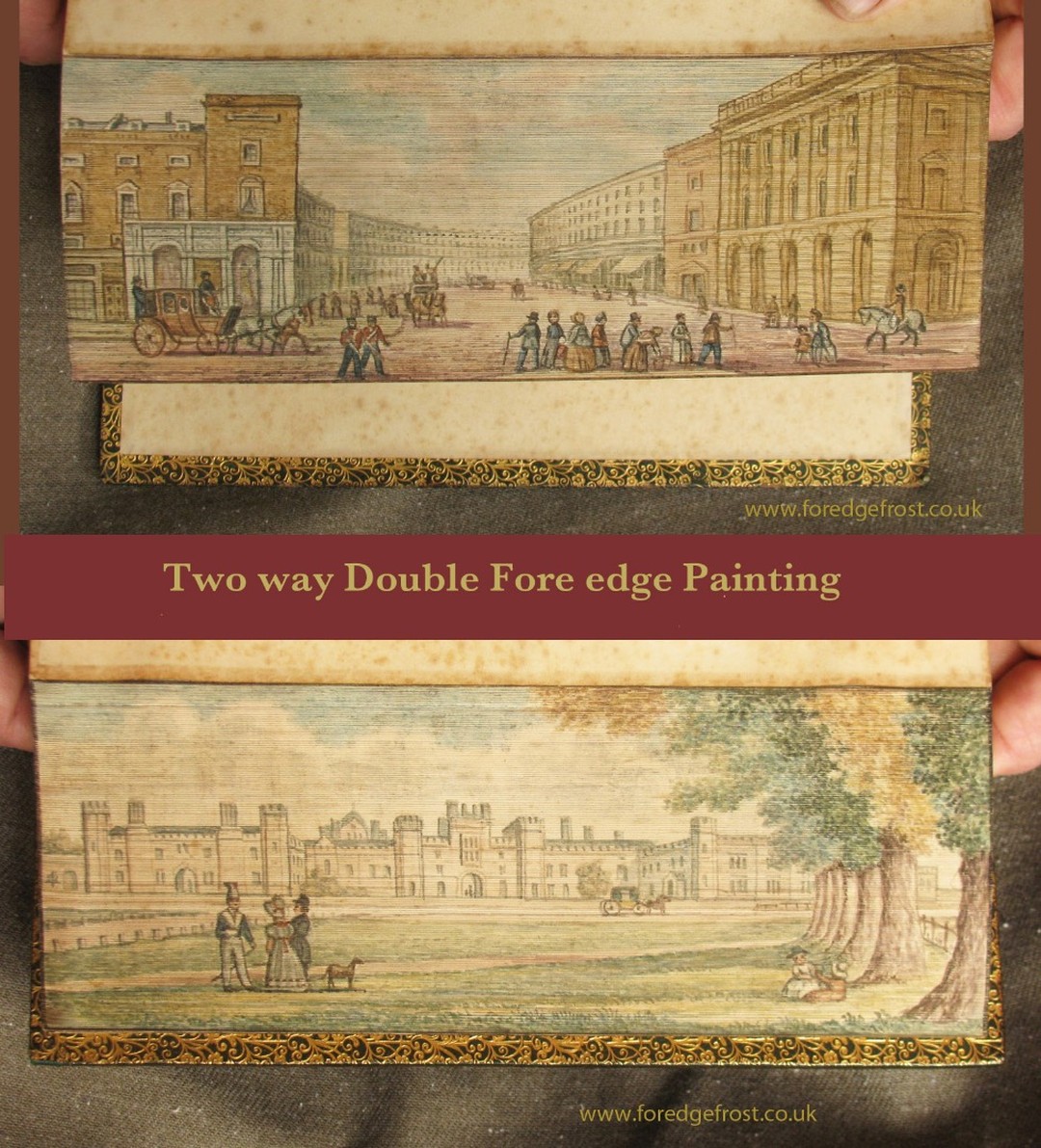
Frost has produced 3,500 fore-edge paintings to date, across 50 years of honing his craft. A commission can take anything between 12 hours and a week to complete, depending on the size and complexity, and whether the book needs to be gilded and rebound. While Frost is a dab hand, his work isn’t without challenges.
“I’m working on lots of bits of paper, it’s difficult to stop the paint from going in between each leaf,” he said. “If you’re looking at a cross-section, there’s almost a set of stairs … I’m painting on those stairs, and the paint wants to go inside the book.”
The other challenge is that some of the pages of old books can be greasy or spongy, and while watercolor is traditionally a very wet medium, Frost has to approach his painting differently.
“It can’t be wet because it doesn’t work; it goes into the paper, it makes the paper wobbly, and it tends to take the gold off,” he explained. “It also means that you have to work slower, because you’re putting down little bits of fairly dry paint, so it’s not a quick technique.”
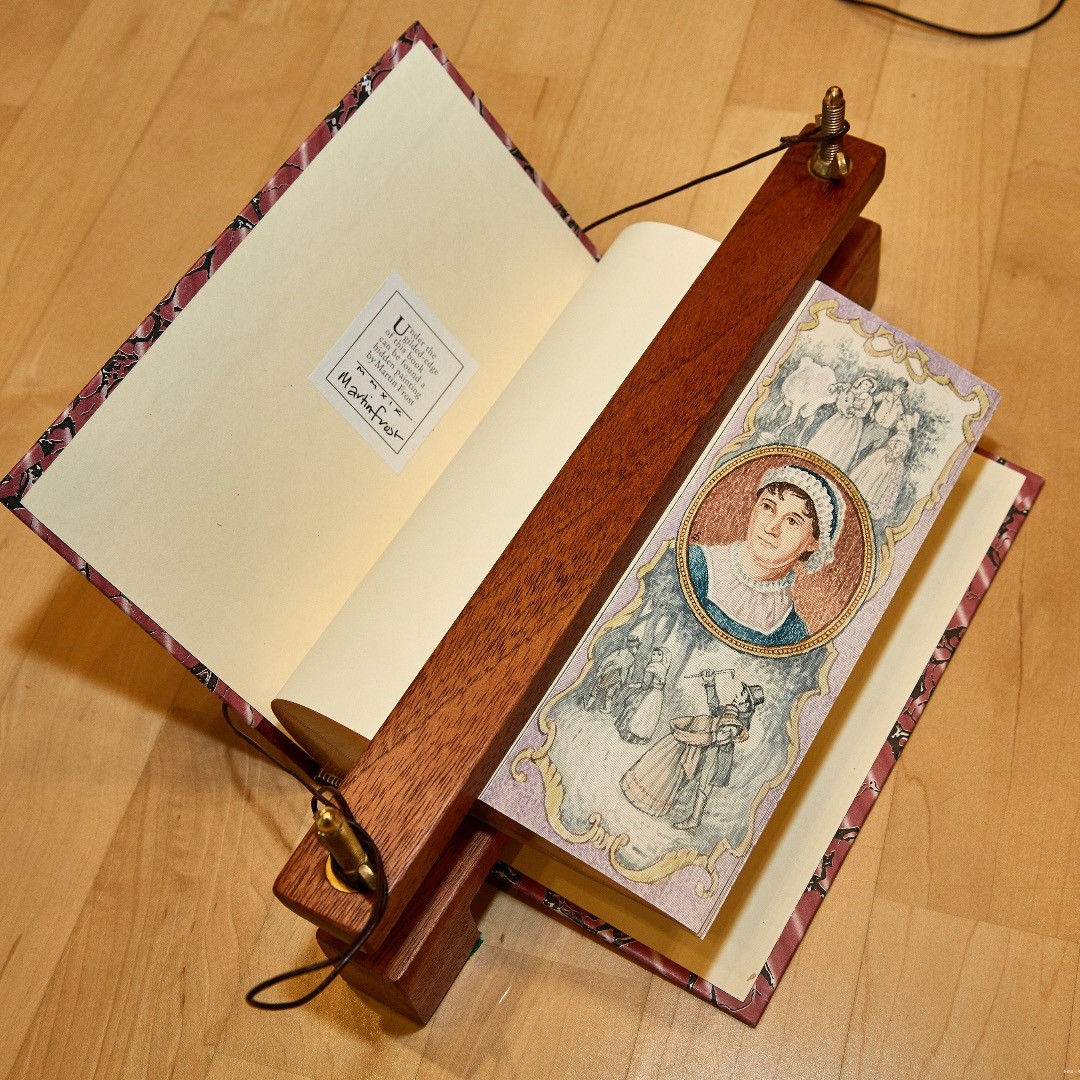
Watercolor also isn’t a forgiving medium.
“You can’t make a mistake,” Frost said. “When you make a mark, that’s your mark, you’re stuck with it. You can’t overpaint it … you have to be very deliberate about what you’re doing.”

‘Critically-Endangered Craftsman’
Frost shares his captivating craft on his website and on Instagram, where he said the most common response to his vanishing paintings is, “Wow, we didn’t see that coming … that’s the magic,” Frost said.
Most people are a bit confused and wonder if there is any battery that goes into it to make it work. However, he assures there isn’t any such thing and it’s a physical painting.
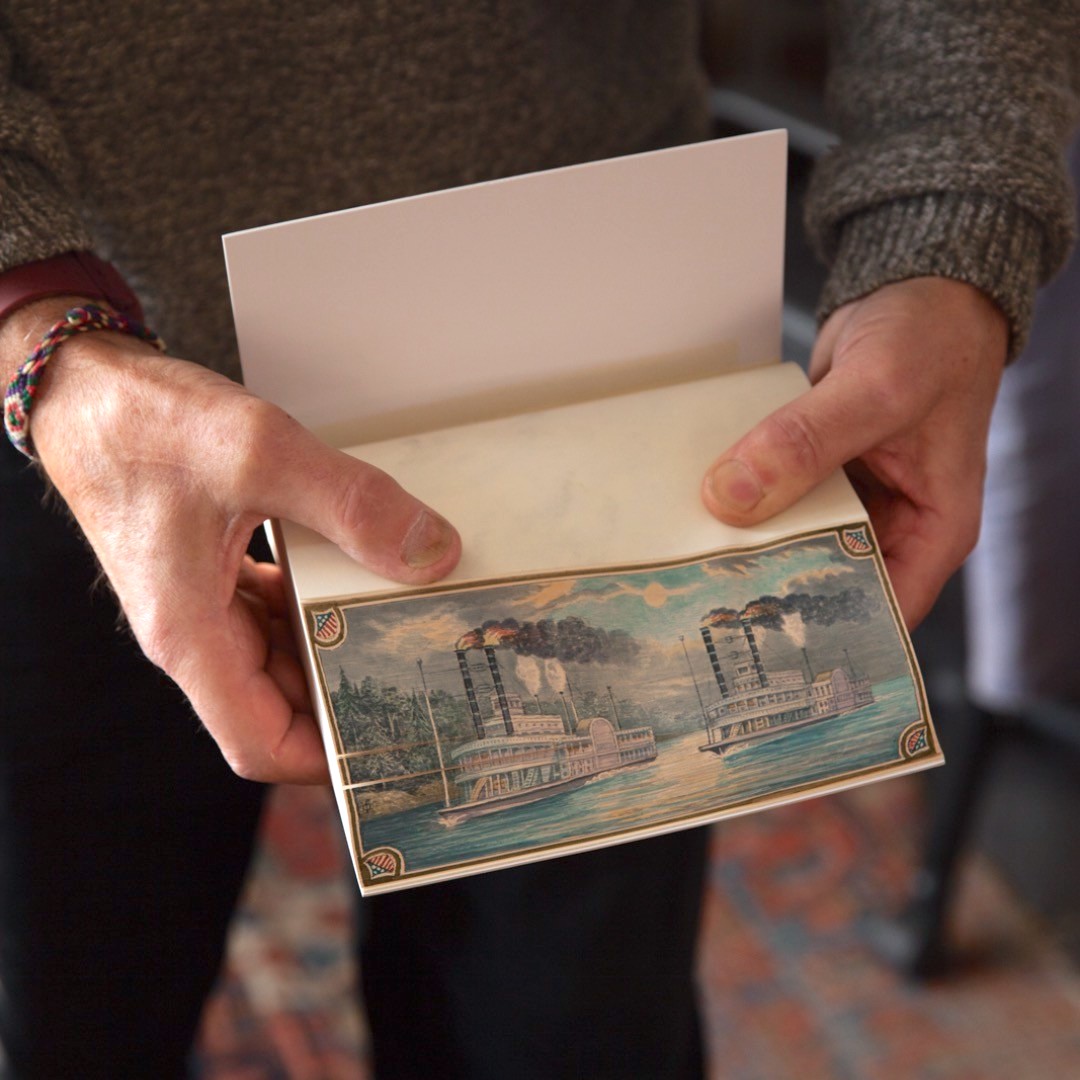
“My Instagram project is to put up an archive, a record of one man’s work over his commercial lifestyle, which is a bit unusual; most fore-edge painters, we don’t know who they were. They never signed their work … now, I’m happy to talk about it and say it’s me, and all my work has a signature … a little symbol that I put onto the painting.”
Frost has had the occasional critic ask him why he would make paintings that one can’t see or deface an old book, but Frost’s response is simple: his art is a loving homage to the words between the pages and the sole goal of his profession is to “make people smile.”
Frost has been listed as a “critically-endangered craftsman” by Heritage Crafts Association, but his biggest accolade to date was an Member of the British Empire (MBE) awarded at the royal Windsor Castle in England.
“It was my daughter that really pushed it,” Frost said. “She thought it would be good publicity for me to try and get some sort of acknowledgment from the Palace on the basis that I’m the last man standing. They came back and said, ‘Yes, you qualify.'”
Frost expected to receive his MBE from Prince Charles but when he arrived at Windsor Castle with his wife and daughter, he was met by the queen of England. Frost said: “I came back on the same day in my full suit, with my medal on my chest, and I went into the nursing home [to see my mother]. She loved it; she told all of the other people in the home, ‘That’s my son!'”
A number of new craftspeople have started fore-edge painting in the past five years, Frost said, but none are making vanishing paintings. Since the once-thriving market has dwindled, Frost can handle the workload on his own.
Semi-retired, he has hopes of passing the baton. As such, he has run in-person workshops in many European countries such as Amsterdam, Belgium, France, and across the United States for 15 years, trying to encourage others to adopt the craft and help revive the market.
“Nobody ever knew about fore-edge painting because they’re hidden away; you can’t hang a painting on a wall, they’re not in galleries,” Frost said. “It’s got to be me showing you … I’m running out of time, although I will never retire so long as I can paint.”
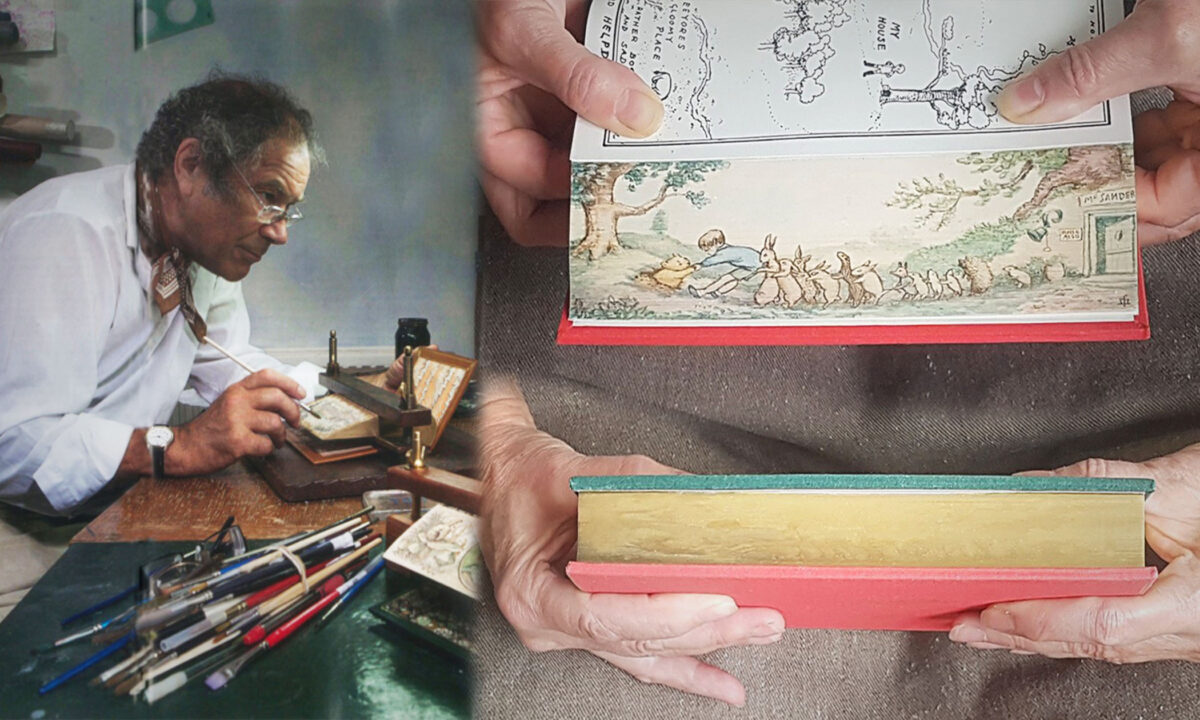


No comments:
Post a Comment